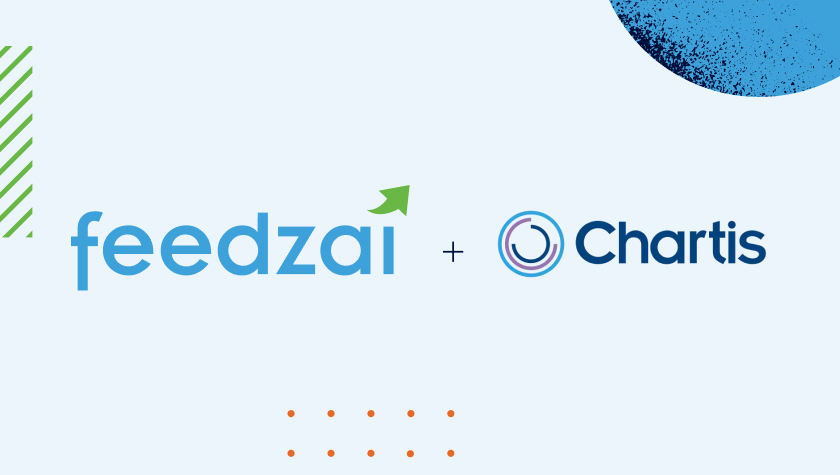
The inherent trouble with asking a bank to outline its risk appetite is that it implies there’s some kind of art behind it. But in reality, there are numerous known and unknown factors at play that prevent banks from making informed, objective decisions about the way they handle risk. Risk operations (RiskOps) enables banks and financial institutions to take a more measured approach and is changing the way financial services think about risk in the process.
What is RiskOps?
A RiskOps platform provides banks with a framework to more effectively manage financial crime risks. This ensures a standardized approach to risk management that makes abstract and hard-to-define concepts like “risk” and “opportunity” easier to gauge. Having the ability to measure and analyze risk management enables banks to think of risk assessment as a science, instead of an art form and thereby make more confident decisions.
As its name suggests, RiskOps operationalizes risk by putting customers at the center of decisions and treating them fairly. It also empowers FIs to react fast to new opportunities, uncover suspicious behaviors, identify criminals more accurately, and stop more fraud. In other words, RiskOps allows FIs to seamlessly handle the challenges of identity, real-time data, and collaboration across teams and systems to deliver better, more trusted services to customers.
The 3 Pillars of RiskOps
RiskOps platforms are supported by three key pillars:
- Comprehensive Architecture. Banks rely on data from multiple sources, in multiple formats, directed to multiple systems to make informed decisions. But banks need to process this widely disparate data at both speed and scale. RiskOps works in real time, providing a single, centralized location for data to be ingested and interpreted.
What this means for banks: A RiskOps platform’s comprehensive architecture gives banks a centralized hub to identify emerging fraud threats, new business needs, and insights into user experiences and operational performance. Banks can foresee where their priorities should lie instead of waiting to react to the latest trends.
- Human-centered AI. An unfortunate side effect of technology is that it becomes easy to think of customers as data points instead of people. If bank customers aren’t scored based on their individual behaviors, they can unfairly be grouped into cohorts and experience unnecessary friction. RiskOps platforms employ multidimensional data that enables banks to put customers at the center of AI. The platforms build hyper-accurate risk profiles based on customers’ individual behaviors – enabling banks to detect changes in behavior and stop financial crime more easily.
What this means for banks: Having highly accurate views of how customers behave and transact enables smoother customer onboarding and can reduce the risk of offboarding a customer. These insights can also reduce customer attrition and reduce the threat of AI bias by treating a customer as an individual instead of as part of a cohort.
- Collaborative Analytics Suite. It’s very common for silos to exist between fraud prevention, anti-money laundering (AML), and risk teams. Each department focuses on their respective role leading to communication gaps. RiskOps platforms eliminate these silos by offering a single location for a bank’s entire team to access the data they need and opens new doors to communication and collaboration across the organization.
What this means for banks: Enabling internal users to work together more effectively allows teams to reduce fraud losses, prevent more financial crime, and improve customer experiences. It also enables fraud prevention and AML teams to work smarter, resulting in greater job satisfaction and more rigorous AML compliance.
5 Tips for Implementing RiskOps
Now that you are familiar with RiskOps platforms, their architecture, and how it changes risk management, the next question is how can you prepare your FI to embrace it? Here are five steps banks can take to start their RiskOps journey.
1. Evaluate Your FI’s Self-Service Risk Appetite
Risk management has historically required banks to implement a variety of point solutions to address each individual business need. RiskOps eliminates the inefficiencies that emerge from relying on multiple point solutions by consolidating data and offering staff a collaborative suite of tools. The result is teams take greater ownership over the organization’s risk framework. The platform enables greater coordination between teams and personnel to exercise more control over their destinies. Establishing how much control should be exercised and by which teams in advance will go a long way toward making RiskOps platforms work more effectively.
2. Identity Opportunities Your Bank Previously Overlooked
Approaching risk as an art form can have a serious impact on a bank’s bottom line. Specifically, it means banks might err on the side of caution and bypass opportunities. With a RiskOps platform in place, financial institutions’ risk teams look at their risk assessment across the organization to better understand where their earlier approach to risk left them exposed. Having RiskOps in place gives banks a 360-degree view of a customer’s risk profile, opening new opportunities for banks to understand why they previously declined to take on a customer and whether that was the right decision. Banks can identify more opportunities by having a clearer, up-to-date understanding of the customer’s risk level.
3. Clarify Your Organization’s Data-Sharing Guidelines Upfront
A disparate array of point solutions can lead to organizational silos and communication gaps. RiskOps offers a consolidated view of data and opens new opportunities for your teams to collaborate more effectively. That said, data is highly regulated in this day and age. As RiskOps makes data more easily accessible across an organization, set clear expectations on how the data will be handled. These rules should make clear what types of data can be shared, who can access it, and how it can be used. Setting internal procedures will be important to protect your customers’ data and how your organization follows regulatory compliance and conducts internal audits.
4. Establish Your Bank’s Priorities
RiskOps platforms offer clearer insights into customer behaviors, present new collaborative opportunities for banks, and offer a centralized hub for data. While your organization will be tempted to take these capabilities and quickly pursue new business opportunities, it’s also important to assess your organization’s vulnerabilities to financial crime. Regulators constantly scrutinize banks to ensure they follow best practices. Take a hard look at your organization’s vulnerabilities and identify and address the biggest weaknesses to make the most of the opportunities your RiskOps platform offers.
5. Declutter Your Bank’s Internal Systems
Consolidation of disparate systems is one of the biggest benefits that RiskOps platforms offer. Take the time to audit your bank’s internal systems for solutions that are no longer necessary. If a single point solution’s functions can be performed by the RiskOps platform, consider replacing it. It’s important to note that your organization should not remove or replace all systems entirely. If your company has signed a long-term contract with a vendor or if a system is tied to a specific business use case you could interrupt important functions by replacing it. Instead, look carefully at which systems can be phased out immediately – and which ones will be replaced in the longer term.
Risk has been viewed as an art form for far too long. RiskOps platforms break the illusion by giving banks the tools they need to make informed, intelligent decisions about how to manage risk more effectively. With the right RiskOps platform in place, banks can improve their internal collaboration capabilities, improve customer experiences, and consolidate their data operations.
Instant payments are popular with both customers and fraudsters. Download our new eBook Prevent and Detect Payments Fraud with Feedzai to learn how to keep your customers safe.
Share this article:
Robert Harris
Robert Harris is the Head of Product Marketing at Feedzai and a passionate proponent for fighting fraud and money laundering particularly in financial services. Robert is an accomplished leader in both small and large organizations in identifying opportunities, securing funding, and creatively delivering value in line with project goals. Whether launching new solutions or maximizing value from mature ones has a keen commercial eye and a conviction to both innovate and make prioritization decisions accordingly.
Related Posts
0 Comments8 Minutes
Blocking Money Mules Starts with Inbound Payment Monitoring
Fraudsters have become highly innovative, manipulating legitimate customers with…
0 Comments4 Minutes
Elevating Fraud Prevention in Latin America: Feedzai’s Strategic Partnership with Dock
In the rapidly evolving world of fintech, security remains a paramount concern. As a…
0 Comments4 Minutes
Feedzai Named Top Category Leader in Payment Risk by Chartis
Feedzai, the world’s first RiskOps platform for financial risk management, has been named…


